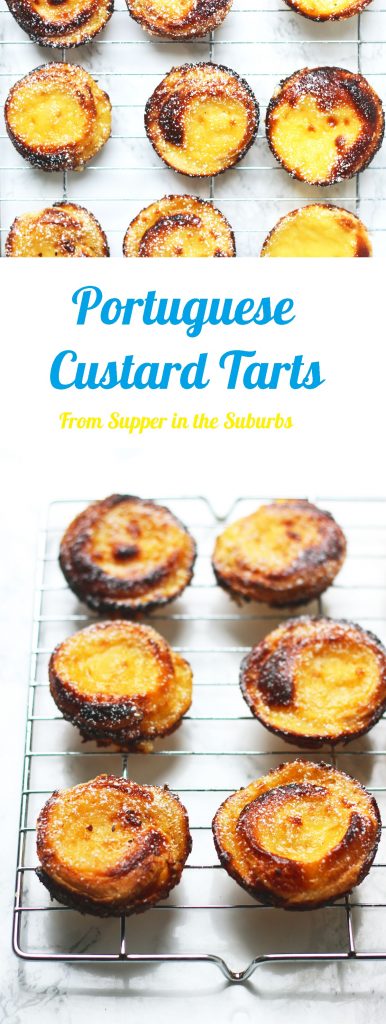Portuguese Custard Tarts
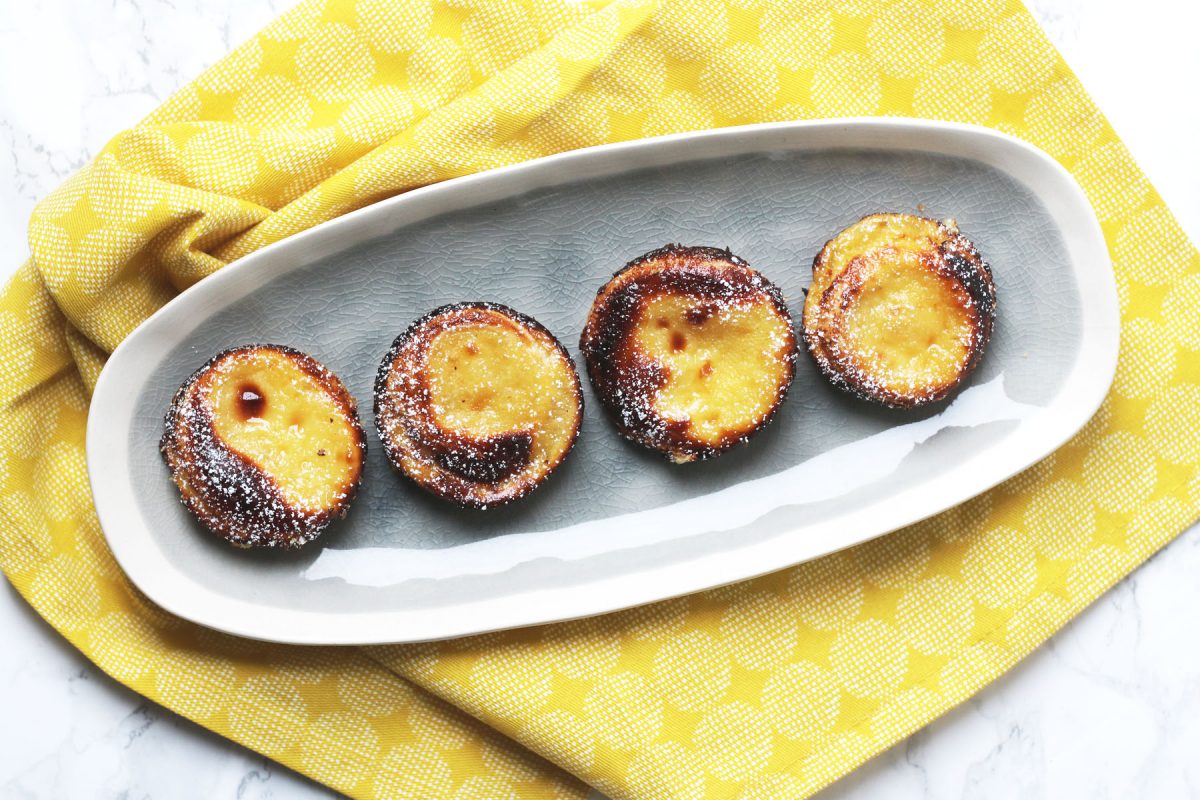
Try my take on classic Portuguese Custard Tarts. They are the perfect sweet pastry to have alongside a cup of coffee on a sunny day.
Would you believe that the inspiration for these custard tarts came from the Eurovision Song Contest! I was hosting a cake club the same day as the final and so I’d set the theme as Euorovision. I wanted to make something that was in some way connected to this year’s host country Portugal.
I had considered making a simple Madeira cake and although it would have been a thing of beauty I didn’t think it was quite special enough. I thought long and hard and soon settled on Portuguese Custard Tarts!
We get so many over the top layer cakes at cake club that I thought it would be a nice alternative. Sadly for me the first batch went wrong!!! But don’t worry I’ve made these enough times now that you don’t have to make the same mistakes I did. Scroll down to the recipe to see the lessons I learnt.
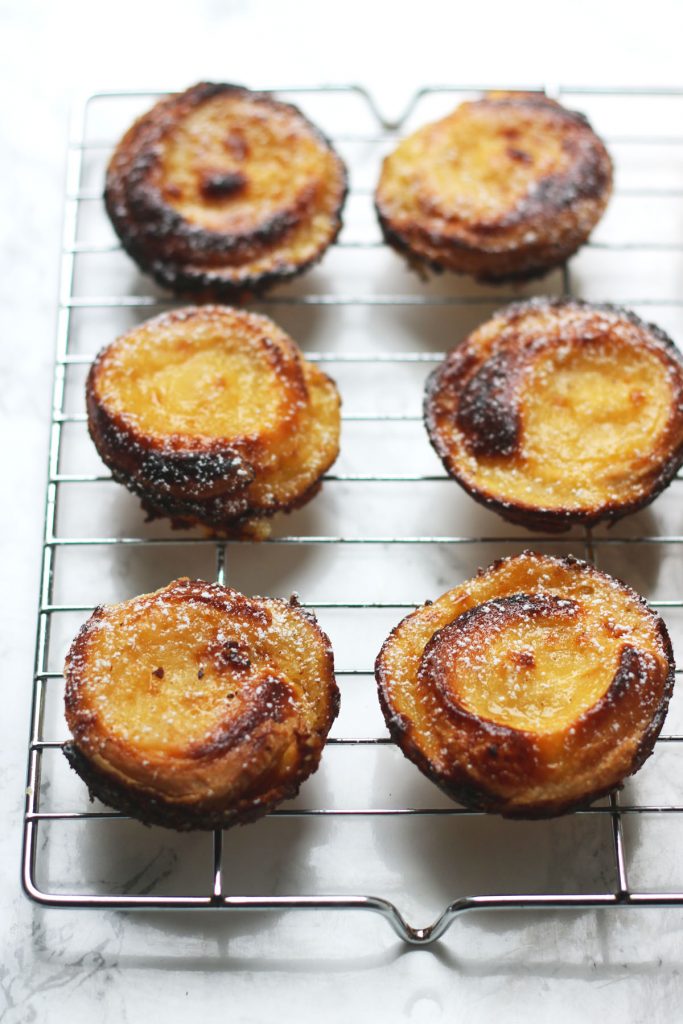
Page Contents
The history
It’s generally thought that Portuguese custard tarts were originally created by monks in the district of Belém. In 1834 monasteries in Portugal were being closed and a monk from the Heironymite Monastery began selling these sweet treats to make some money.
By 1837, a bakery claiming to be the original creator of the custard tarts had been established. It was called the ‘Pastéis de Belém’ and is still in existence today. You can visit and see the master chefs creating hundreds of the little tarts in their factory and bakery!
Pastéis de Belém is a must-visit for foodies that find themselves on holiday in Portugal!
Let’s break it down…
The recipe for a traditional Portuguese Custard Tart is actually a closely guarded secret so these are just my take on the classic pastry. From all of my research (aka taste testing) I settled on a few key ingredients to flavour my custard: lemon, cinnamon, nutmeg and just a tiny bit of vanilla.
I think a lot of people are scared about making custard because they worry that it will curdle and go all lumpy but there’s an easy way to stop that happening – go slow!!! Curdling happens when the eggs are heated too quickly, as long as you add the warmed milk very slowly you won’t have any issues. If in doubt, go even slower! Cooking should be a relaxing process anyway…
Of course pro-cooks will make their own pastry but I’m not going to cover that in this recipe. How to make puff pastry deserves its own post another time! If you’re not feeling brave enough to attempt your own or, like me, you just don’t have the time then don’t worry there are so many fantastic all-butter ready made puff pastry blocks out there these days that you really don’t need to worry.
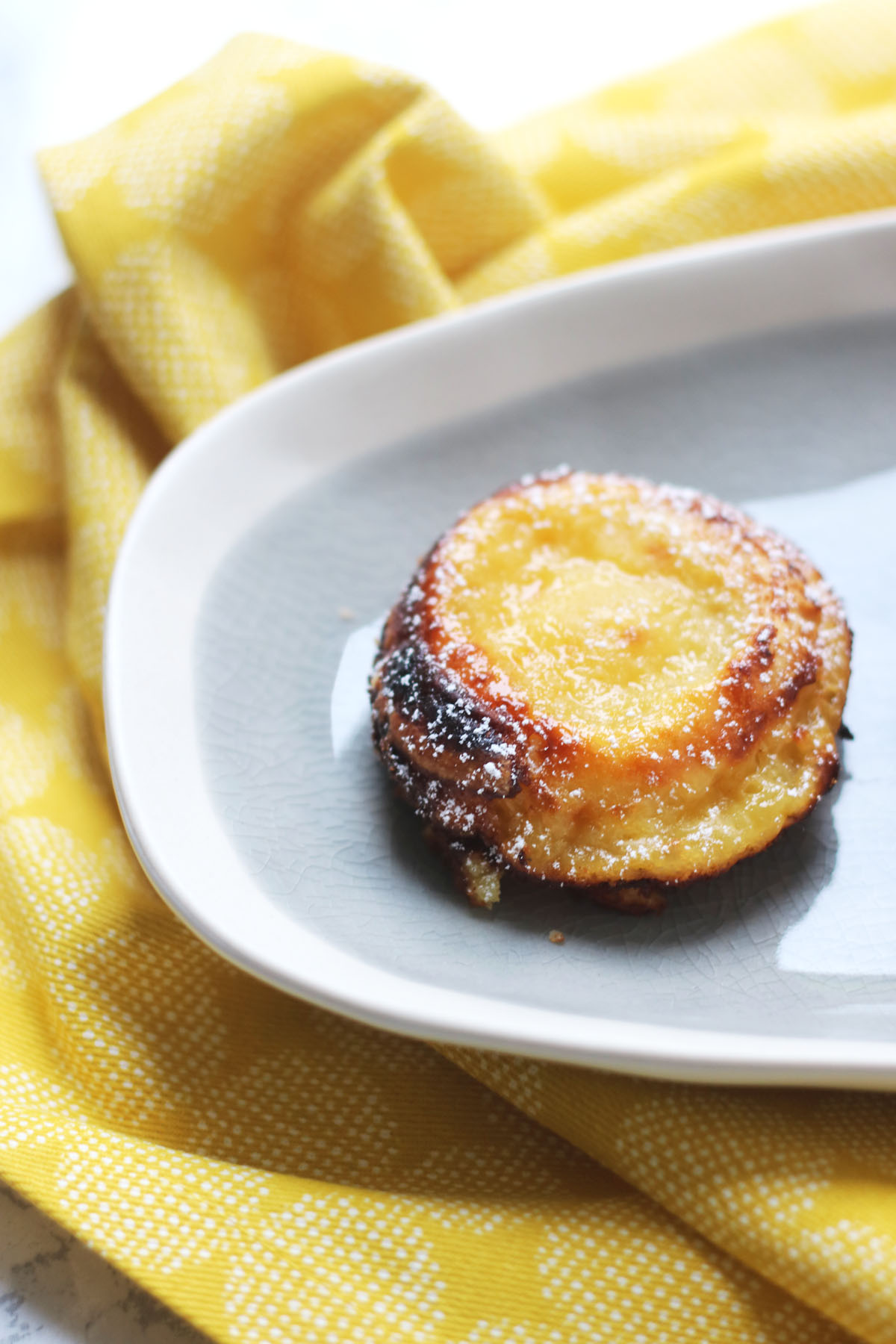
The recipe
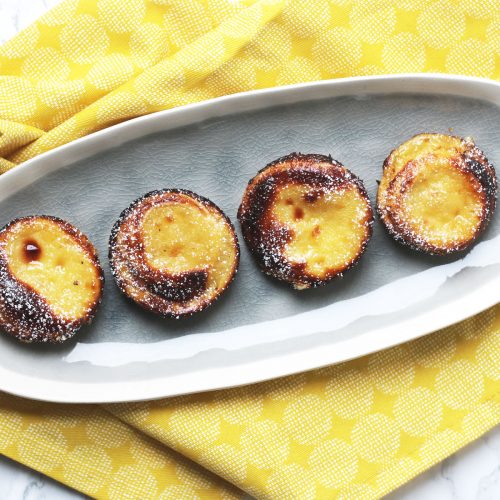
Portuguese Custard Tarts
Ingredients
For the custard
- 250 grams caster sugar
- 1 cinnamon stick
- 1 lemon unwaxed, zest only
- 3.5 tbsp plain flour
- 1.5 tbsp cornflour
- 300 millilitres whole milk
- 4 egg yolks
- 1 egg
- 1 vanilla pod seeds only
For the pastry case
- 2 tbsp all purpose flour
- 300 grams all-butter puff pastry
- 0.5 tsp nutmeg
- 1 tbsp icing sugar
To dust
- 1 tbsp icing sugar
Instructions
- Pre-heat the oven to 230C or gas mark 8.
For the custard filling
- In a saucepan, gently dissolve the caster sugar in 250ml of water along with the cinnamon stick and lemon zest.
- Heat the sugar syrup until it begins to boil before reducing to a simmer for 3 minutes.
- Place the syurp to one side and let it cool completely.
- In a bowl, mix together the plain flour and cornflour.
- Add some of the milk and stir until it forms a smooth paste.
- Heat the reamining milk in a saucepan and bring to the boil, stirring frequently.
- Once it has reached boiling point, slowly pour it into the bowl of flour, whisking well to make sure there are no lumps.
- Once all of the milk has been incorporated, remove the cinnamon stick and lemon zest from the sugar syrup and whisk the sugar syrup into the milk and flour.
- Next add the egg yolks, one by one, whisking well.
- Finally, whisk in the whole egg followed by the seeds of the vanilla pod.
For the pastry cases
- Dust a clean flat surface with the flour.
- Roll the pastry out into a long rectangle (roughly 50cm long) until it is only 1mm thick (in other words, as thin as you can get it!)
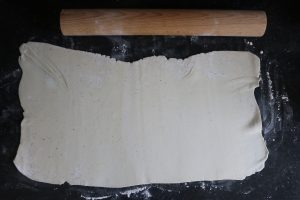
- Spin the pastry until the long edge is facing you then dust with the icing sugar and nutmeg.
- Roll the long edge of the pastry towards you as tight as possible.
- Cut the pastry sausage into 12 equal pieces.
- Place those pieces on their end, so the spiral is facing up.
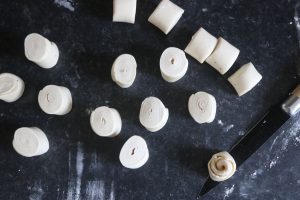
- Roll the pieces into disks roughly 1mm thin.
- Lightly grease a muffin tin and gently ease the discs into the tin - using a wet finger to push the pastry into the corners.
- Place the muffin tins on to an oven shelf in the centre of the oven before filling with the custard until they are almost full.
- Cook for 20 minutes or until the pastry has puffed up and the top of the tarts are scorched.
- Remove from the oven and allow to cool for 10 minutes before dusting with a little icing sugar.
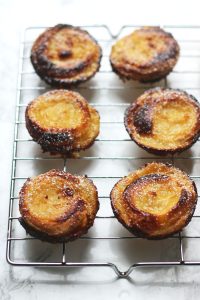
Nutrition
Lessons learned…
Now I’d be lying if I said my first attempt at Portuguese Custard Tarts turned out perfectly. I don’t think that has ever happened in the history of the pastry! So, to save you all the hard work, trial, error and embarrassment, here are the lessons I learned:
- Roll out your pastry SUPER thin – like as thin as you can before it starts to break. Puff pastry puffs up (I know, I’m stating the obvious) and if you don’t roll the cases out thin enough your pastry will be raw in the middle and puff up so much there will be no room left for the custard!
- Wet your finger before pushing the pastry into your muffin tin. This stops the pastry sticking to you.
- Fill the pastry cases with custard while they are on your oven shelf. Trying to move them from kitchen counter to your oven while they are full is going to involve spillages. By filling them while they are already almost in the oven you can minimise the mess and make sure they are full to the brim with custard.
- Don’t turn your oven up “high”. I found quite a few recipes that suggested modern ovens didn’t go up as high as the ovens used for making “real” Portuguese tarts and so but turn your oven up as high as it goes. This was a big error in judgment…even with checking on the pastries often I ended up with some seriously scorched pastry. Though the custard was delicious!
- If you end up with too much custard just heat it up on the hob and pour over your favourite stewed fruit. Yum!
Pin it for later!
